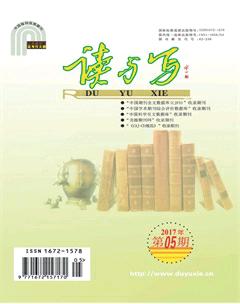Study on the Micro—class Types Used in College English Audio—visual Course
武雯敏
Abstract: As to micro class in college English audio-visual teachings application, with the support of network, computer and mobile media, it provides a three-dimensional learning, training, and use atmosphere for modern college students college English audio-visual course. This study found that due to the interactivity, openness, and students dependencies on network and its carrier, there are altogether three types of micro classes used: “audio-visual”, “visual-oral” and “visual-audio-oral” micro class. It makes good use of college students extracurricular time and their dependence on the use of information technology facilities, effectively improving the students academic performance and their visual-audio-oral English ability and learning interest.
Key words:English visual-audio-oral ability; English micro class; education technology
中圖分类号:H319 文献标识码:A 文章编号:1672-1578(2017)05-0001-01
Due to the extensive use of information technology such as multimedia in college English teaching, the atmosphere of college students comprehensive English visual-audio-oral learning thus comes into being, scientifically inspired the students potential to use all kinds of information technology infrastructures. So how to guide them to put their personal computers, mobile phones and other mobile devices into micro course of college English learning, and to explore the fusion of “scenario games, autonomous learning and English thinking” of the new type of college English teaching to enhance the students high efficiency in college English visual-audio-oral course is an issue worth public concern. Taking the writers personal teaching experiences into account, there are altogether three types of micro classes used in college English audio-visual course, that is, “audio-visual” micro class, “visual-oral” micro class and “visual-audio-oral” micro class. In the following part, the paper focuses on the analysis of the three diverse micro classes.
1 “audio-visual” micro class
This kind of micro class is aimed at cultivating the students “visual” and “audio” English ability. Using the “audio-visual” micro class in college English teaching, there are two basic teaching goals to be achieved. First, to train the college students English listening ability in the visual environment, that is to say, to train the college students how to use English thinking and personal experience, to expand the comprehensive “audio-visual” ability training, based on the speakers facial expressions, body movements and the change of surrounding environment, whose purpose is to improve the comprehensiveness of the “watching” and the accuracy of English “listening”. Second, to tech college students how to connect what they see with what they hear, as well as the necessary skills to receive information accurately. This is based on the above knowledge skill ability training, training the students how to grasp the key details they see and the key words or expressions they hear, further to achieve the skills of receiving accurate information sent by the other side.“Visual” training is to cultivate college students ability to receive a silent environment information, while “audio” training is to train college students English knowledge listening and technical listening ability.
2 “visual-oral” micro class
In the new mode of college English oral training characterized by the “network, visualization and interactive”, the ultimate goal is to train and improve students English “meta-cognition level and the confidence of the oral English learning”. Therefore it is recommended that the two gradual operations according to the teaching difficulty be made: one is descriptive or declarative micro teaching. It is a kind of relatively basic teaching, aiming to cultivate students ability to use and have a good grasp of vocabulary, flexible use of grammar through the “visual-oral” teaching. Thus as long as college students can fully express the sights, things and phenomena they see through the“visual” training, the teaching goal is fulfilled. The other is the argumentative micro teaching. This requires college students not only possess a relatively solid foundation in English grammar skills and knowledge, but also need the ability to refine their views and conclusions in between different things, behaviors, and different points of view. College students need to make good use of such thinking faculties as comparison, analysis, induction and comprehensive ability,etc. to “speak out” the things, phenomena and the background they “see” and further draw their own “conclusion”.
3 “visual-audio-oral” micro class
There are two kinds of effective“audio-visual” micro teaching: one is the “pronunciation intonation, grammar, and fluency” micro“audio-visual” teaching. According to the teaching need, teachers targeted to select and edit such typical video as teaching materials, to help students accurately understand its characteristics and further to be inspired from these. The other is the micro “audio-visual” teaching with “rich content, complete structure and accurate words”. It is mainly the relatively complete classic English video fragments display teaching, characterized by precision of language use, integrity of the sentence and rigor of grammar. Students can learn more rigorous sentence structure and expression of contextual adaptation.
In college English audio-visual course,teachers use micro class to compress and optimize informative content, help students really combine the knowledge learning and ability training in self study, experience learning and inquiry learning, cultivate their ability to use foreign language.
參考文献:
[1] 艾军.“语言游戏”思维关照下的大学英语教学[J].外语学刊,2010(4):100-102.
[2] 卢海燕.基于微课的“翻转课堂”模式在大学英语教学中应用的可行性分析[J].外语电化教学,2014(4):34-37.

